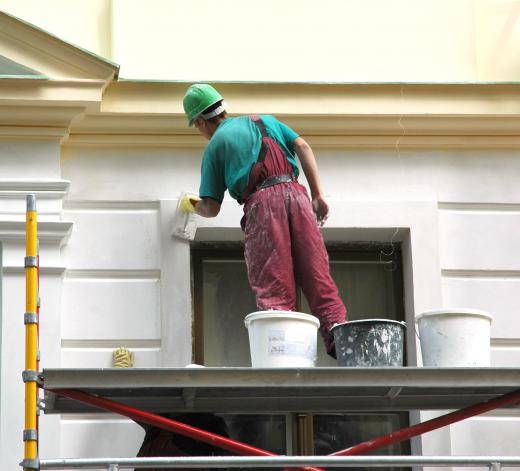Scaffolding brackets are devices that attach to the side of a scaffold section. The brackets allow a unit, called a walking plank, to be placed on the side of the scaffolding, thereby allowing workers to be positioned closer to the working area on the side of a building or structure as the job requires. Made of tubular steel sections, that are welded to create a triangular assembly. The scaffolding brackets are available is several different lengths, each intended to place the walking plank close to the work area. In addition to an area that is designed to hold a walking plank, each section of the scaffolding brackets also has a fixture to attach a safety rail, which is intended to prevent accidental falls.
Many construction and renovation projects require the use of scaffolding to allow workers to reach the upper areas of the project. The typical scaffolding arrangement consists of boxlike structures that can be stacked on top of each other until the desired height has been reached. In order to allow the workers to reach the work area more comfortably, scaffolding brackets are attached to the scaffolding. Once attached, a wooden or aluminum walking plank is placed onto the scaffolding brackets. The plank provides a working platform for the workers to operate on in close proximity to the structure.

While the most common style of scaffolding brackets consist of painted steel construction, there are also galvanized steel brackets that are designed to be used in masonry applications. The galvanized finish of the scaffolding brackets allows the dried-on concrete to be removed more easily than a painted finish, and the chemicals in the concrete and mortar will not corrode the brackets as rapidly as the painted surfaces. The strength of the brackets not only allows two or more workers to operate on a single walking plank — they provide enough strength to allow a surplus amount of cement blocks, bricks and mortar to be stocked on the plank as well.
Occasionally, concrete blocks will be hung on individual scaffolding brackets, placed on the back side of the scaffolding to be used as counterweights or ballast. The ballast is commonly needed to offset the weight of the workers operating on the front side of the scaffolding. The most common type of attachment method for scaffolding brackets is to simply slide over the scaffolding tubes and lock on by fitting securely over the tubular structure, however, some brackets use a thumb screw to physically fasten to the scaffolding and prevent slipping.
